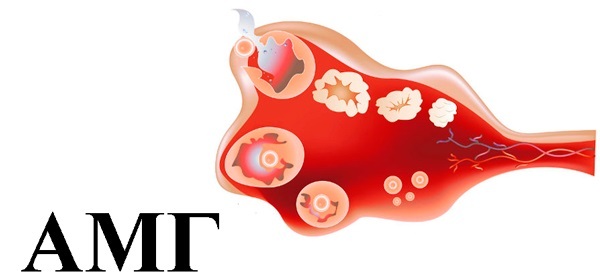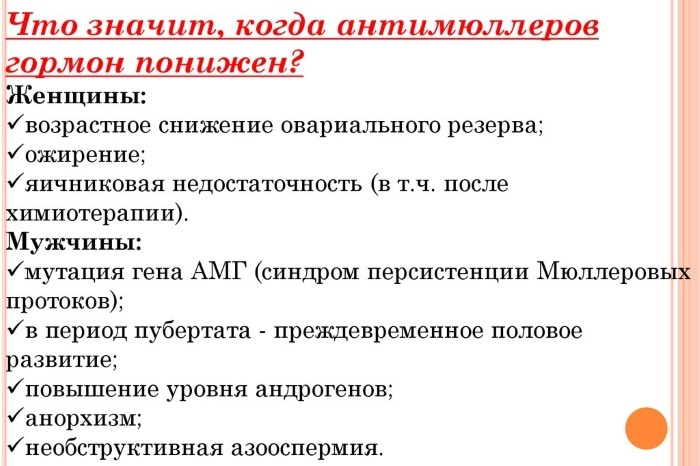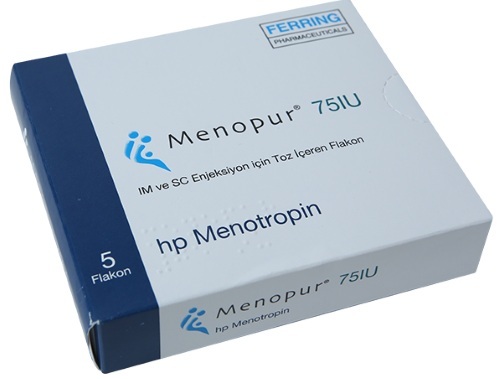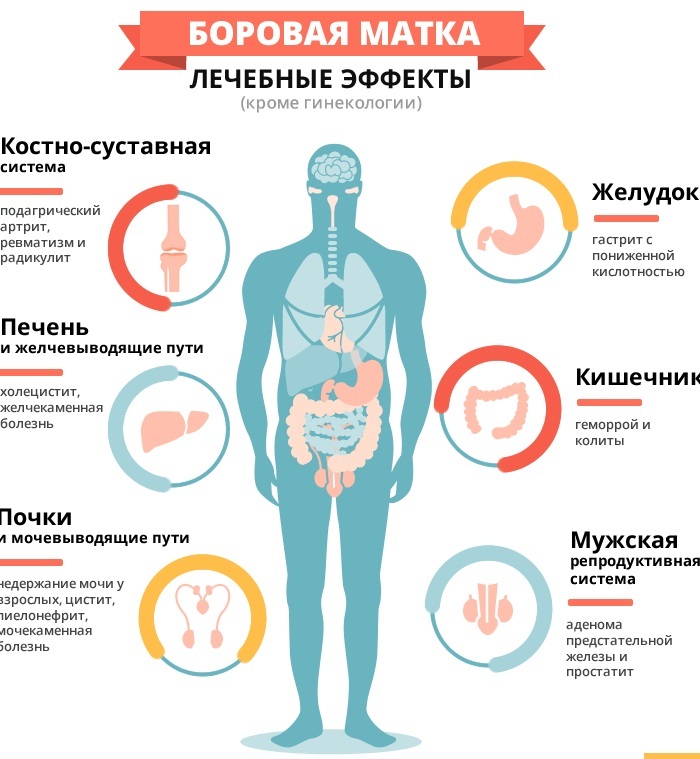Reproductive function after the onset of menstruation is directly dependent on hormonal levels. Among the most important hormones are estrogens, progesterone, and AMH. To raise anti-Müllerian hormone with its reduced rates, it is necessary for women planning pregnancy.
Record content:
- 1 Functions in the body
- 2 How and under what conditions is it produced
- 3 Indicator table is normal
- 4 Decrease symptoms
- 5 Reasons for the decline
- 6 How to determine the level
- 7 When to see a doctor
-
8 How to bounce back
- 8.1 Medications
- 8.2 Traditional methods
- 8.3 Other methods
- 9 Possible complications
- 10 Video about anti-Müllerian hormone
Functions in the body
Anti-Müllerian hormone is a protein molecule that limits the overgrowth of reproductive tissue in men and women.
The hormone got its name thanks to the substance, under the influence of which the Müllerian duct dissolves at 9-10 weeks of intrauterine development in males. This structure has a similar structure up to 9 weeks in the male and female body, after which the process of differentiation begins.
The main function of the anti-Müllerian hormone in the prenatal period is the formation of female genital organs, in particular, the uterus and vagina. In the third trimester, the girl's follicles produce a small amount of it, remaining at this level until the period of her puberty.
In females, its active production is carried out in the tissue of the ovaries, and in men in the testes. A significant decrease in synthesis is noted in the premenopausal period as the number of eggs decreases.
The main functions of anti-Müllerian hormone in the body include:
- Participation in ensuring the growth of follicles and maturation of oocytes;
- stimulation of estrogen production under the influence of FSH synthesized in the pituitary gland.
How and under what conditions is it produced
The anti-Müllerian hormone is produced even before the baby is born. At the same time, synthesis does not depend on the work of the pituitary gland and hypothalamus, as well as other organs of the endocrine system.
In males, production is carried out by Sertoli cells and the seminal duct of the testicles. In women, AMH is produced by the primordial follicles of the ovaries.
The maximum concentration of this hormone is observed during puberty, later it stabilizes and remains at the same level for an average of up to 40 years. Gradually, in men, it decreases, but the synthesis continues in an insignificant amount, which ensures the preservation of reproductive function until old age. In females, production stops with the onset of menopause.
The anti-Müllerian hormone cannot be increased after the onset of menopause, since the supply of follicles is depleted.
Indicator table is normal
In order to determine the level of anti-Müllerian hormone, it is necessary to pass an analysis involving the collection of venous blood. When decoding the indicator, the patient's age is taken into account. The indicator is not affected by food intake, the use of drugs with antibacterial activity, as well as the phase of the menstrual cycle.
| Age | Men | Women |
| Less than 2 years | 15-500ng / ml | <5 ng / ml |
| From 2 to 12 years old | 7-240 ng / ml | <10 ng / ml |
| From 13 to 45 years old | 0.7-20 ng / ml | 1-10 ng / ml |
| 45 years and more | 5-140 ng / ml | <1 ng / ml |
Decrease symptoms
Symptoms of decreased anti-Müllerian hormone are not specific. In some cases, its deviation from the norm may not manifest itself clinically in any way, and a woman does not always pay attention to a change in well-being. This happens especially often when the menstrual cycle is not disturbed, and the reproductive function is fulfilled.
Among the symptoms that may bother the patient with a reduced anti-Müllerian hormone, there are:
- Inability to get pregnant. The development of infertility of a primary or secondary nature is associated with age-related changes, as well as an abnormal structure of the ovaries, the absence of one of them or a decrease in ovarian reserve against the background of taking medications, surgical interventions or hormonal violations.
- Irregularity of the menstrual cycle. Women with low anti-Müllerian hormone tend to delay menstruation. At the same time, the woman is not worried about pain syndrome or subsequent hyperpolymenorrhea. Initially, the menstrual cycle lengthens, and subsequently, delays last up to several months.
- The appearance of hot flashes and changes in blood pressure. Periodically, women notice a feeling of heat, which is not associated with physical exertion or nervous strain. As the anti-Müllerian hormone decreases, hot flashes occur at night and are accompanied by sweating, heart palpitations, and a feeling of fear. Against the background of a decrease in the hormone, the likelihood of pressure surges with a tendency to arterial hypertension increases.
Reasons for the decline
Before you understand how to increase the anti-Müllerian hormone, you need to understand the reasons for its decrease.
These conditions are often found in clinical practice and to find out the cause, it is necessary even before laboratory or instrumental examination of the patient to collect anamnesis data and find out complaints. Clarification of information about the anamnesis will help to diagnose and select further management tactics with a possible prognosis.
The most common and physiological reason for a decrease in anti-Müllerian hormone is natural aging of the body. A woman's ovarian reserve decreases with age, and it is this hormone that reflects the supply of follicles.
It can be at the genetic level and in some patients it occurs later than the average. indicators, or, conversely, a woman can note the relationship between the early onset of menopause in the female lines.
Also, reproductive function is attributed to the physiological reasons for the decrease in anti-Müllerian hormone. It is higher in women with a history of a large number of pregnancies that ended in childbirth. At the stage of gestation, the function of the ovaries is reduced, since the maturation of follicles does not occur under the influence of hormones.
The onset of menopause. In women, after the cessation of menstruation, there is a decrease in the level of anti-Müllerian hormone, which can also be associated with a change in hormonal levels, a drop in the level of estrogen, follicle-stimulating hormone and progesterone.
Among the pathological reasons leading to a decrease in AMH include:
- Violation of the laying of the organs of the reproductive system in the embryonic period. The female fetus can be affected by toxic factors that the mother faces. This is the use of alcoholic beverages, smoking, the use of drugs and drugs, as well as exposure to adverse factors of work or the environment. As a result, the ovarian reserve can be reduced or completely atrophied, leading to infertility.
- The absence of one of the ovaries. This condition can be congenital or acquired. The acquired conditions are caused by traumatic effects against the background of ovarian apoplexy, rupture of cysts of various origin, removal of tumor formation or focus involved in the inflammatory process, including purulent character.
- Part of the ovary is missing.
- Overweight, leading to hormonal imbalance.
- Long-term stressful effects.
- Exposure to bad habits. The toxic effect causes not only a change in the hormonal background, but also a violation of blood circulation with the process of tissue regeneration. This could be alcohol, drug use, or smoking.
- Postponed radiation or chemotherapy, which is prescribed for tumor processes of a benign or malignant nature.
- Use of hormonal drugs.
- Errors during ovarian stimulation, its frequent prescription.
How to determine the level
The analysis involves the donation of blood from a peripheral vein. In addition to observing asepsis and antiseptics, the patient must fulfill the conditions of preliminary preparation.
This requires:
- Exclude food intake for 8-10 hours of the other delivery of biomaterial. On the eve, you should stop eating fatty foods and alcoholic beverages.
- Avoid smoking 30 minutes before the study.
- Limit physical and emotional stress during the day.
These rules will help reduce the risk of getting diagnostic errors, since the above factors can affect blood clotting.
Despite the fact that the level of the hormone does not depend on the day of the cycle, the biomaterial should be donated 3-5 days from the onset of menstruation, together with other hormones of the first phase. This condition is applicable with a regular menstrual cycle, if it is violated, the analysis is performed on any day.
The anti-Müllerian hormone can also be increased by drugs, for example, drugs with hormonal activity. When receiving them, it is necessary to provide this information to the laboratory assistant, since this factor can affect the result.
The study should be abandoned during the period of acute inflammatory diseases, radiation or chemotherapy.
The level of anti-Müllerian hormone is determined using the immunochemiluminescent method or enzyme-linked immunosorbent assay. Due to the low concentration in the blood, measurements are made in nanograms per milliliter.
When to see a doctor
Any deviation from the norm in terms of anti-Müllerian hormone is an indication for referring to a specialist. answering the question of which doctor it is necessary to consult with, it is necessary to understand the goals that the woman pursued when passing this indicator.
In the case of performing an analysis in adolescence with menstrual disorders, it is necessary to seek help from an obstetrician-gynecologist and an endocrinologist.
In the reproductive period, with unrealized fertility and the diagnosis of infertility, a consultation with a reproductive specialist is required. Its decrease or increase can act as an indication for in vitro fertilization.
If the function is realized, but the patient has pathological symptoms, the problem is solved by the obstetrician-gynecologist.
In the premenopausal or climacteric periods, with a deviation of the anti-Müllerian hormone from the norm and the presence pathological symptoms, as well as the realized reproductive function, the patient needs to seek help from obstetrician-gynecologist.
For men, any deviation from the norm is an indication for referring to an andrologist or endocrinologist.
How to bounce back
You can increase your hormone levels in a variety of ways. To do this, it is necessary to undergo a preliminary examination aimed at establishing the exact cause of violations and excluding contraindications.
Medications
The anti-Müllerian hormone is increased with the help of drugs more effectively than other methods.
The most popular drugs that can increase hormone levels include:
-
Menopur. An agent that can increase the level of estrogen and anti-Müllerian hormone leads to the stimulation of maturation and growth of follicles. Most often it is prescribed in clinical practice to stimulate the ovaries in the first phase of the cycle. The duration of therapy to prevent the risk of complications should not exceed 3 cycles.

- Ovariamin. A medicine based on proteins and nucleic acids stimulates the ovaries. As a result, not only their accelerated growth and maturation are noted, but also an increase in the AMG index. The average duration of the course of therapy is 3 weeks.
- Puregon. A gonadotropic drug used to regulate the growth and normal maturation of follicles, indirectly increases the level of anti-Müllerian hormone. It can be prescribed for anovulatory cycles, as well as at one of the stages of in vitro fertilization. Treatment should not last more than one week in the first phase of the cycle.
Traditional methods
To achieve a slight increase in anti-Müllerian hormone, you can use traditional methods.
The selection of the optimal remedy should be carried out in conjunction with the attending physician, taking into account the goals, concomitant pathologies, as well as contraindications. Due to the nonspecific effect of herbal preparations on the body and the overall effect, it is necessary to combine them together with other methods.
The most popular methods for correcting anti-Müllerian hormone using traditional methods include:
-
Boron uterus and a red brush.

The red brush and boron uterus contains phytoestrogens to help increase progesterone levels in women.
Reception of these plants must be carried out in courses, depending on the phase of the menstrual cycle. In the first phase, from 5 to 7 days before the onset of ovulation, the boron uterus is used in the form of an alcohol solution. A single dose is equal to 20-25 drops, which are taken twice a day.
Also, the boron uterus can be used in the form of a decoction, which is prepared on the basis of a tablespoon of the product with a glass of boiling water. The mixture is infused for half an hour and taken half a glass.
The red brush is used in the second phase of the cycle after ovulation. To prepare the broth, a tablespoon of the plant with a glass of water is boiled for 15 minutes. After cooling, the mixture is filtered and taken daily in a volume of 100 ml three times.
- Sage. Increasing hormonal activity and preventing early menopause with the help of sage is possible when making tea. To do this, at the rate of one tablespoon per 200 ml of water, tea is prepared, which is infused for an hour. A single dose is equal to 2 tablespoons, which are consumed on an empty stomach up to four times a day.
- Vegetable collection. A mixture of several plant components can increase the activity of the ovaries. Acacia, rose, hawthorn, linden blossom, flax seeds, motherwort, and also mother-and-stepmother are mixed to prepare a medicinal broth.
Other methods
The anti-Müllerian hormone can be increased in addition to medicines and folk methods with the help of non-drug treatment.
This requires:
- Observe the mode of work and rest, get enough sleep and exclude stressful influences.
- Eat a diet that restricts potatoes and foods high in simple carbohydrates.
- Increase your intake of unsaturated fatty acids.
- With low hemoglobin, eat a sufficient amount of meat products containing iron.

- Include antioxidant-rich foods and vitamins in the background of radiation therapy. They are able to have a protective effect on the ovaries.
Possible complications
Untimely treatment of a reduced rate in adolescence and reproductive age can lead to severe irreversible consequences. Their severity depends on the level of the substance.
Among them are:
- Violation of menstrual function. In patients with pathological changes, there is a tendency to delay and subsequent cessation of menstruation.
- Infertility. Since AMH reflects the ovarian reserve, against the background of its decrease, the number of ovulatory cycles decreases. This lowers the chances of getting pregnant.
- The development of osteoporosis. Early onset of menopause is accompanied by a decrease in estrogen levels. The result is a decrease in bone density with subsequent osteoporosis and pathological fractures.
With an early decrease in anti-Müllerian hormone, an increase in this indicator at the maximum time allows you to realize reproductive function or prevent various complications. To do this, you need to seek help from a specialist and follow the prescribed recommendations.
Video about anti-Müllerian hormone
About low AMG:


